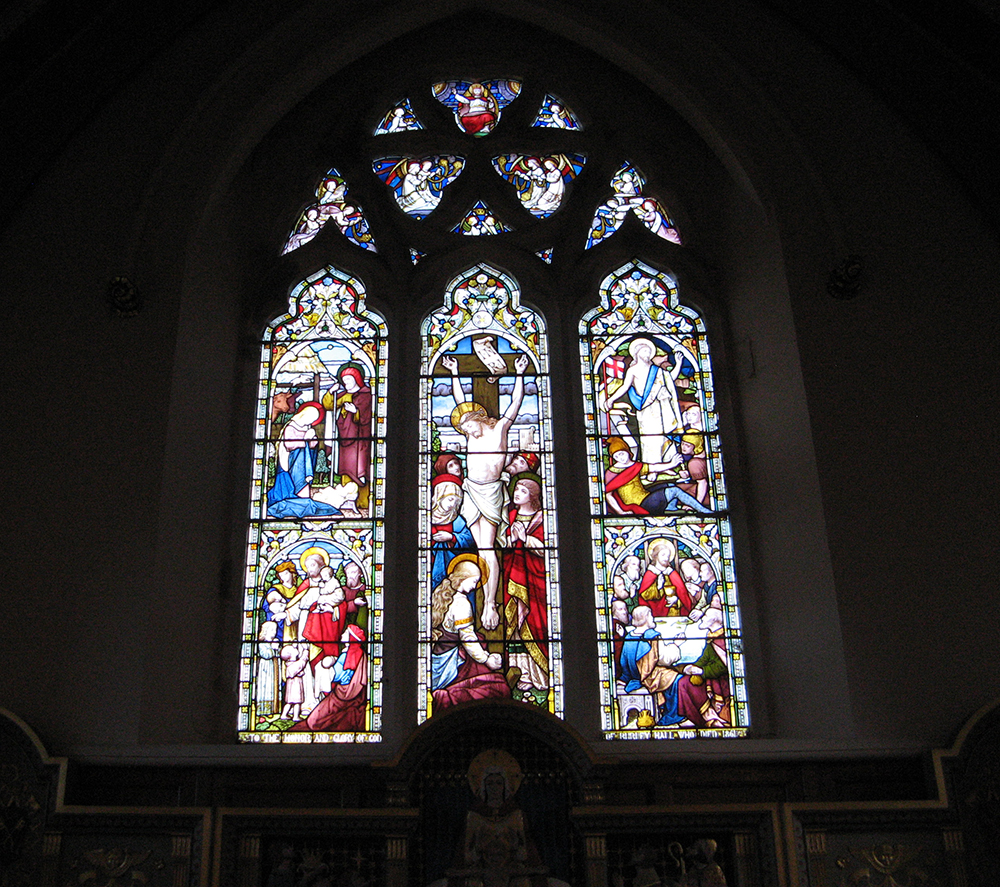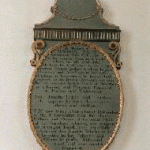 Maude Tablet
Maude Tablet
The original benefactors of an old Chapel which stood on the site of the present church in the 17th Century were Lord Fairfax, Sir Thomas Fairfax, Jeremy Levett, James Gates, William Maude, Michael Stead, William Jenkinson, Edward Maude, Stephen Hartley, William Stead and Francis Pulleyn endowed it with an annual income of £16 13s. and William Vavasour of Stead bequeathed £4 per annum for ever to the endowment.
Some of them are remembered in various parts of our church, but the most striking memorial is that to William Maude which is on the west wall of the Church. It had been in the old chapel but was lost until Charles Black found it in the stables of Burley Hall and had it restored..
 Our first Vicar and two famous members of his congregation.
Our first Vicar and two famous members of his congregation.
Revd. Dr. Charles Ingham Black became Burley’s priest in 1855, while the village was still part of Otley Parish. In 1856, the Parish of Burley and Menston was created and Black became its first Vicar. (Menston Parish was separated from us in 1876.) The brass plaque records hs 41 years of service to St. Mary’s and the window dedicated to him reminds us that he wrote a Christmas Carol.
Two of his congregation for most of the Vicar’s life here were William and Jane Forster, who were part owners with William Fison, of Greenholme Mills.
They lived at Wharfeside and were regular attenders when they were at home. William Forster was a Quaker until he married Jane Arnold, sister of Matthew Arnold the poet and a staunch Anglican. William was M.P. for Bradford, 1861 – 1886, the architect of the Education Act of 1870 and one of Gladstone’s cabinet ministers. There are plaques to commemorate them, particularly one in the Porch. William Forster was buried in God’s Acre in April 1886
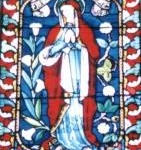 St. Mary’s Window
St. Mary’s Window
Our Patron Saint is Mary, and appropriately we enjoy a memorial and celebration to her through our appreciation of this window.
As the window is south facing, the back-light presents the detail at its best.
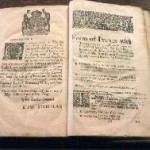 Book of Common Prayer (c1662)
Book of Common Prayer (c1662)
One of our most treasured possessions – an original copy of the Book of Common Prayer. This well preserved book comes complete with liturgy to be used annually on the 5th of November, “to give thanks for deliverance from that most foul and bloody traitorous gunpowder plot”.
We enjoy excellent relationships with our Roman Catholic brothers and sisters, and so the tradition is no longer followed!.
The book was a gift from Lionel Creswell, who was Lord of the Manor in the early part of the Twentieth Century.
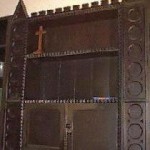 Fairfax Pew (mid 17th Century) – the use of…
Fairfax Pew (mid 17th Century) – the use of…
When the first church was built on this site the Fairfax Chapel, dating from mid 17th Century, was pulled down. Some of the panelling and pews from that building were kept and reused to line the walls of the Vicar’s vestry.
It makes it rather dark in there, but its a wonderful reminder of the Communion of Saints, and our link in the faith with our forebears.
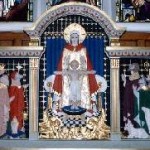 Dalton Triptych
Dalton Triptych
The Triptych, behind the altar, was a gift from a Mr. Dalton, who during the 1950’s lived in Burley Hall, just near the Church.
The central panel, shows the Blessed Virgin holding the infant Jesus, watched on the right by shepherds, and on the left by the Magi. Mr Dalton liked to be known as ‘the spiceman’, hence the appearance of the Magi!
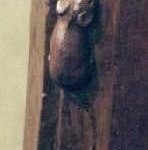 ‘Mousey’ Thompson
‘Mousey’ Thompson
and the mice he carved!
All the wooden furniture in the Chancel and Sanctuary was made in 1952, by Mousey Thompson, the famous wood-carver from Kilburn in North Yorkshire. His trade mark was a mouse, and he carved one on every item he ever made. You can see one on one of the choir stalls on this photograph.
One of our ‘Mice’ are missing!
There used to be mice carved on the communion rails, until one day many years ago, a lady began coming to the church who was scared of mice, and would not come to communion because of the mice carved on the rail. They were removed, and the story goes, that Mousey Thompson was not amused!
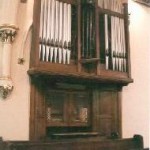 Organ
Organ
The Church had a small organ in a gallery at the West End when it was built in 1843. Then in 1870 when the Chancel was extended, a recess for a larger organ was built and the gallery removed.
This bigger and better instrument has been repaired on several occasions but in the 1990s it was beginning to show its age and due to a very generous donation by Frank Newbould it was restored to its present quality. Frank was associated with St. Mary’s for over 80 years and for many of those years until his death in 2005 he sang in the Choir
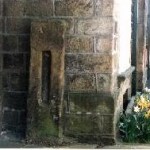 Village Stocks
Village Stocks
It is thought that the area in this corner of the village, around the present Church, has been the place from where all of Burley has developed over the village stockscenturies, and it is where a place of worship has been sited since records began. ‘Burhleg’ is mentioned in the Saxon Chronicles of 972, and ‘Burghelai’ in the Domesday records of 1087. It was in fact an outlying part of an estate in the Otley Parish, in the Manor of the Archbishop of York.
The remains of the original Stocks, the date of which are not known, are just outside the Church Gate, and it is ironic to think that it was also once the place where people were ridiculed for their sins. Thankfully we remember these times but no longer carry on this ritual!!
Cresswell Chest (c1630)
The Cresswell Chest dates from the year 1630, and because of its value, has to be kept locked in the Vicar’s Vestry. Made of oak, it has three locks, and three different keys. One was held by the Lord of the Manor, another by the Incumbent, and the third by a “gentleman of the village”.
